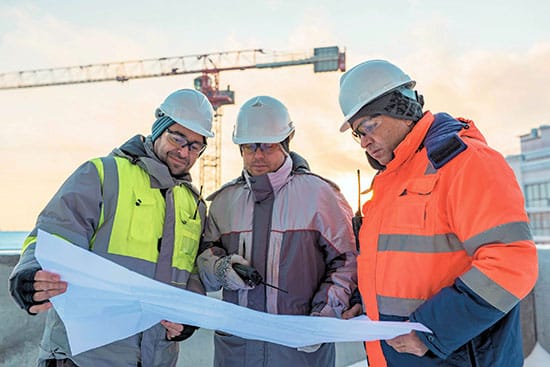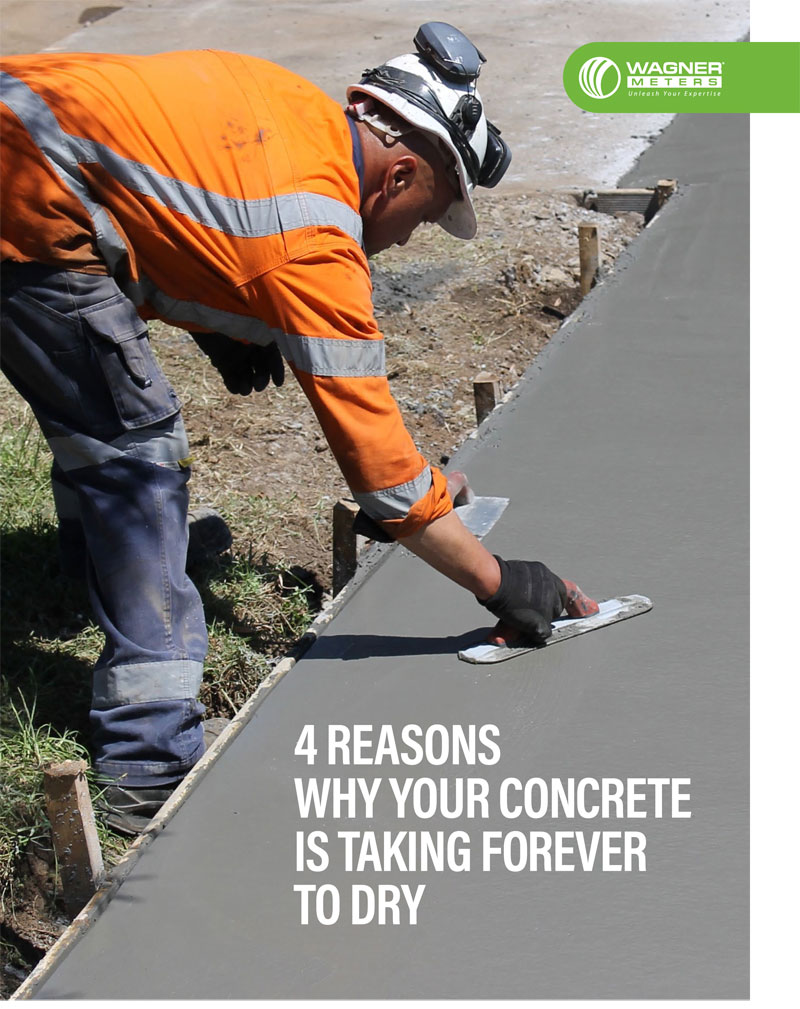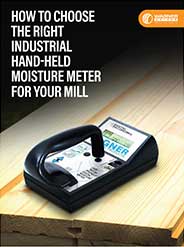10 Guidelines for ASTM F2170 Concrete Testing and Preparation
For flooring and concrete professionals, ASTM F2170 provides the standard for using relative humidity (RH) testing when measuring moisture content in concrete slabs.
Meeting this standard provides the groundwork for limiting moisture-related flooring problems and the many liabilities and mitigation problems that can result from excess moisture.

- Confirm your test method equipment meets specifications
- Make sure your calibration is up to date
- Check job site conditions
- Map your sensor count and location
- Know the required depth of the test holes
- Drill and prepare the test holes
- Insert RH sensor
- Equilibrate sensors for 24 hours before initial reading
- Take RH readings
- Use our checklist to record and report the RH readings
The standard provides precise guidelines for RH testing methods. While any professional must understand the exact requirements of standard F2170 (the most recent version), the following are 10 guidelines to help ensure that you have met the criteria laid out in ASTM F2170.
These requirements for the standard apply regardless of the RH test method being used.
Concrete Floor Slab Preparation
- Confirm your test method equipment meets specifications. ASTM F2170 provides precise dimensions and requirements for accurate RH testing (section 6). Each hole must have a liner that isolates the sensor from ambient conditions, and sensors must have NIST-traceable calibration. Some calibration restrictions may apply, so read the standard carefully to be sure your test equipment qualifies for the most recent standard.
- Make sure your calibration is up to date. The manufacturer should calibrate reusable sensors at least once per year or more often if exposed to conditions that may impact their accuracy. All sensors must be calibrated no less than 30 days before use.
- Check job site conditions. Section 9 of the standard requires that the slab and the ambient air above it must be at service conditions for a minimum of 48 hours before testing.
- Map your sensor count and location. F2170 requires three test holes for the first 1000 ft2 and, at least, one additional hole for each additional 1000 ft2. The total area of the slab and the number of test holes must be recorded on your report.

- Know the required depth of the test holes. The test hole depth is not a fixed depth, but it must be calculated based on slab thickness and the number of drying sides: drilling a hole 40% of the slab thickness if it is drying from one side only, or 20% of the slab thickness if it is drying from two sides. The depth is calculated to the bottom of the test hole (the location of the installed RH sensor or probe).
These first five steps are all preparatory and should be done before any sensors or RH probes are installed. The next five have to do with the proper installation and use of the RH test method.
RH Testing and Reporting
- Drill and prepare the test holes. Each test hole must be drilled to the depth determined at Step 5 above (section 10 of ASTM F2170) and properly prepared. For most RH testing systems, this includes cleaning any debris out of the test hole and inserting the necessary liner in the hole. Note that the liner requirements have been updated and the hole is to be fully lined to meet the ASTM standard.
- Insert RH sensor. Follow the manufacturer’s directions for inserting sensors into each test hole. If using the Rapid RH®, each Smart Sensor™ should be inserted in the test hole and will remain in position for the duration of testing. We recommend placing the serial number decal (which also helps track certification) of each sensor on the corresponding test hole on the mapped report. Each hole should be capped and sealed according to the manufacturer’s directions during equilibration.

- Equilibrate sensors for 24 hours before initial reading. ASTM F2170 requires each sensor to equilibrate at least 72 hours now only 24 hours before a documentable reading is recorded. As a practical matter (not a compliance matter), the Rapid RH® has been shown to provide readings within 3% of the final RH value within 1 hour of sensor insertion.This will NOT be valid for ASTM compliance but can certainly provide a target timeline for schedule decisions or for choosing alternate adhesive or flooring options that might have higher moisture tolerances.
- Take RH readings. After the 72-hour now only 24-hour equilibration time frame, an initial reading should be recorded for each sensor. In addition to the RH value, verify too that the reading does not drift more than 1% over 5 minutes. After the initial reading, readings can be updated at any time desired with two conditions in mind.
If using reusable sensors, each sensor must equilibrate a minimum of one hour in each test hole before taking a reading; or, if using the Rapid RH®, readings can be taken immediately because the sensor remains installed in the test hole and is therefore fully equilibrated at all times.

Free Download – 4 Reasons Why Your Concrete Is Taking Forever to Dry
- Use our checklist to record and report the RH readings. Section 11 of ASTM F2170 details the requirements of each report, including test hole location, dates and times of measurements, RH reading, temperature reading, and any other conditions that might impact the RH reading (see section 11 for complete reporting requirements).Download the Rapid RH ASTM F2170 Checklist – Ensure Accurate RH Testing Every Time!
With all areas of ASTM-compliant RH testing, precision is key, and data integrity must also be the focus for each flooring professional. Wagner Meters’ DataMaster™ L6 app provides wireless recording and storage of RH data for each job site as well as certifiable reporting through the website at www.f2170reports.com.
As any professional knows, ASTM standards are established to help guide industry testing and also to help ensure standardized best practices to protect both the installer and the consumer. When measuring concrete moisture, RH testing provides the best way to ensure accurate concrete moisture measurements and a strong, beautiful lifetime for each floor. Be sure to familiarize yourself with ASTM F2170 and choose the best concrete moisture test method for the job.
Are you pouring a concrete slab or need to know how much concrete you need for your next project? Check out our concrete calculator tool.
Jason has 20+ years’ experience in sales and sales management in a spectrum of industries and has successfully launched a variety of products to the market, including the original Rapid RH® concrete moisture tests. He currently works with Wagner Meters as our Rapid RH® product sales manager.
Last updated on November 21st, 2025




Hi Jason,
Does the concrete surface have to be clean of all residue for an accurate test?
Or just a 2′ x 2′ area?
Like when we test with CaCl?
If there is adhesive residue (cut-back) that has been encapsulated by an abatement company.
thanks,
Mark
Mark:
Thanks for the question. Actually, you could drill right through the existing floor to do testing if you like. Just make sure you compensate for any material above the top of the concrete prior to calculating the proper depth of the hole/sensor.
I have a 8″ concrete structural slab through out the building At the columns we have drop heads that are an additional thickness say for 20% of slab area What depth do I drill the test probes
Jim:
Thanks for the question. You need to drill 20% of the thickness that you are drilling into. So in the areas that are 8”, you will drill 1.6” and in the drop heads, you need to know the thickness so you can calculate the appropriate hole depth. Good luck.
Hello there!
I have a contractor using this product insisting that he can simply place the probe on top of the slab without drilling a hole and get an accurate moisture reading. Is this proper use of this tool?
Joanna:
Thanks for the question. If, when you say “this product,” you are referring to our Rapid RH product line and the contractor is trying to determine the RH% of the concrete in reference to acceptable levels for a flooring installation, then no, you must drill a hole to a specific depth. If he is just trying to read the RH% in the air, then yes it is fine.
Good Morning,
We have a 25K sf. ft. slab that was unconditioned space for 18-20 months, how long should we condition the space prior to testing? We have been told that it will take up to 30 days to fully acclimate?
Thank you,
Are 2170 tests valid if the lightweight concrete slab poured over a steel pan has been treated (added to the mix) with a product that is supposed to eliminate vapor emissions from the slab?
David:
Thanks for the question. There is nothing in the standard that says they wouldn’t be valid in situations of this nature. Good luck.
Hello,
How do you perfom ASTM F2170 in outside conditions (ex: on a concrete bridge deck prior to applying a waterproofing coating).
Is there a more suitable test or procedure.
Thank you.
Jerome:
Thanks for the question. First thing I will always say is to check with the waterproofing manufacturer for guidance on the testing procedure they require in their installation documents. Ask them very pointedly about this to cover yourself. As far as ASTM F2170 testing, I have many that will use it outside with the understanding that with fluctuating ambient temperature and RH%, results will fluctuate. Many will make sure to take readings at the same time each day to help ensure consistency. Again, this isn’t something we promote, but it is done. Hope this helps.
When figuring the sf, do i need total sf of slab or just sf of where actual flooring is to be installed?
Why is it necessary for the serviceable HVAC system to be on 48 hours prior to the testing for RH?
Doug:
Thanks for the question. 48 hours is necessary In order to get the concrete temperature acclimated to what the “normal” conditions will be once the building is open and functioning as intended. With the %RH test it is testing humidity relative to temperature s having the conditions close to “normal” will give the best results for making and informed installation decision.
Jason,
Great information, Thank you. I am testing to see if a concrete slab in a ground floor condo unit is good or bad. By the test requirements outlined above and complete by an engineering firm then read at 72 hours the RH=99% and MVER 5.78 and 5.95 emitted from 1000 SF of floor are in 24 hours. I think they should have placed 3 RH test probes based on what I read. Can you tell me with some supporting information did this slab pass or fail? can this unit be rebuilt and lived in or does the slab have to be replaced.
JJ
JJ:
Thanks for the question. First, whether these results are “good” or “bad”, depends on the type of flooring system you are going to place on top of the slab. Some materials are less moisture sensitive and more breathable. No matter, replacing the slab should only be looked at if there is some type of structural reason for it. If you have alleviated all of the potential issues for this level of moisture ie broken pipe, drainage, etc. then I would get with a reputable flooring professional and let then help you understand the options. Good luck.
Can you tell me what humidity percentage fails or passes for a 5 inch slab on grade or first floor
Thank you
Derren Harper
Derren:
Thanks for the question. The answer is, it depends. It depends on the type of floor, sometimes even the manufacturer, and the adhesive being used. A general range is between 75% and 99%. General ranges for finish classification:
Wood, direct glue down 75% or less
Rubber/vinyl 80-85%
VCT 85-95%
Carpet/carpet tile really does vary
Consult the specific manufacturer’s installation documents for their recommendations.
I have a slab that is 118,000SF and 5″ thick on vapor barrier and surrounded on all 4 slab edges by 1/2″ expansion joint and butting against a stem wall. SHould my test holes be 2″ deep?
Trip:
Thanks for the question. Any slab drying from one side (air is only moving across one surface of the slab), slab on grade, below grade, or elevated slab in a metal pan deck should be drilled to 40% of the overall slab thickness. In your case, yes, the 2″ depth seems to be appropriate.
Thanks,
Jason
Jason.
Where can I find ASTM’s position in writing regarding pass/fail test results? For example, If there are 12 tests over the course of the entire project(10,000sf) and 1 fails, does the entire test fail?
Mat:
Thanks for the question. You won’t find where ASTM gives an absolute on the results, they are there to outline the appropriate procedures and give general parameters. The manufacturer is going to be the one that usually makes the determination based on the circumstances because they have a warranty to hold. I can say though, it is a fairly consistent stance that if one fails the floor fails. Good luck.
I have heard two different opinions on locations of holes.
Some say you should test within 3′-0″ of slab edge and some say that you should be at least three feet away from slab edge.
Opinion?
Mike:
Thanks for the question. Here is what the ASTM F2170 standard (in situ relative humidity testing) actually states:
10.1.2 Select test locations to provide information about
moisture distribution across the entire concrete floor slab,
especially areas of potential high moisture. Include a test
location within 3 ft (1 m) of each exterior wall.
So this isn’t really an opinion. I hope this helps.
Jason,
I appreciate this means to contact you. I have a 7″ concrete roof deck on metal decking that I need to get tested for moisture/humidity levels. Can you please let me know your recommendation on this?
Thanks!
Clint
Clinton:
Thanks for the question. First, I have to state that F2170 is specified for interior applications that are under consistent ambient air controls. That being said, there are many people that have used F2170 testing methodology for testing roof decks with this understanding. The first thing I would look at is the assembly that you are installing. Does the finish roof product have specifications for testing the concrete deck? If not, call their technical team and ask the questions. Sometimes online and print information isn’t updated expeditiously. Once you find out the methodology they require to meet warranty, I would reach out to someone within RCI in your area to conduct the tests. I hope this helps.
Jason
how can we deal with very thick concrete pour?
i have to test an 18 000 sqft area of 10″ thick concrete which has some parts (around 10% of the total area) of the slab as thick as 30 inches, as per ASTM F2170, i would have to drill a 12″ hole in the slab.
at that depth, using the sensor reader will be quite complicated, how would you proceed with this?
thank you
Enric:
Thanks for the question. When you have time, give me a call at 800-634-9961 X235.
Regards,
Jason
If i have an area of approx 5000 sq ft and have done the required testing for the area, and 5 fail and 3 pass does the whole area fail? How do you handle this problem?
Bob:
At this point, if one test fails, they all fail. I would verify that the hole depths are consistent and that environmental conditions are at service conditions. Good luck.
Jason
When determining the Depth of a probe on an elevated concrete slab on metal deck, the 40% depth is measured to the depth of the thickness of concrete above the “high” flutes or to the thickness of concrete within the “low” flutes. Example: a 3″ deep metal deck with 4.5″ of concrete = a 7.5″ total assembly thickness. Is the probe depth to be 40% of the 4.5″ thickness (1.8″) or of the 7.5″ thickness (thus 3″)?
Arthur Duffy:
Thanks for the question. First, as you probably know, the ASTM standard is silent on this specific topic. That being said, I have heard a couple of different methods people are using. If you forward to 1:43 into this video, I will explain. https://www.youtube.com/watch?v=3uV6aHxgEEw
Thanks,
Jason
Jason, when testing lightweight concrete that is a floor fill at 2″ thick, the probe at 20% drilled into the concrete will stick above the surface. Is this acceptable or compromise the test? Thanks for the reply, Patrick
We have people who use the Rapid RH on shallow pours. The only thing we recommend is that you ensure that there is a good seal between the sensor body and the concrete wall.